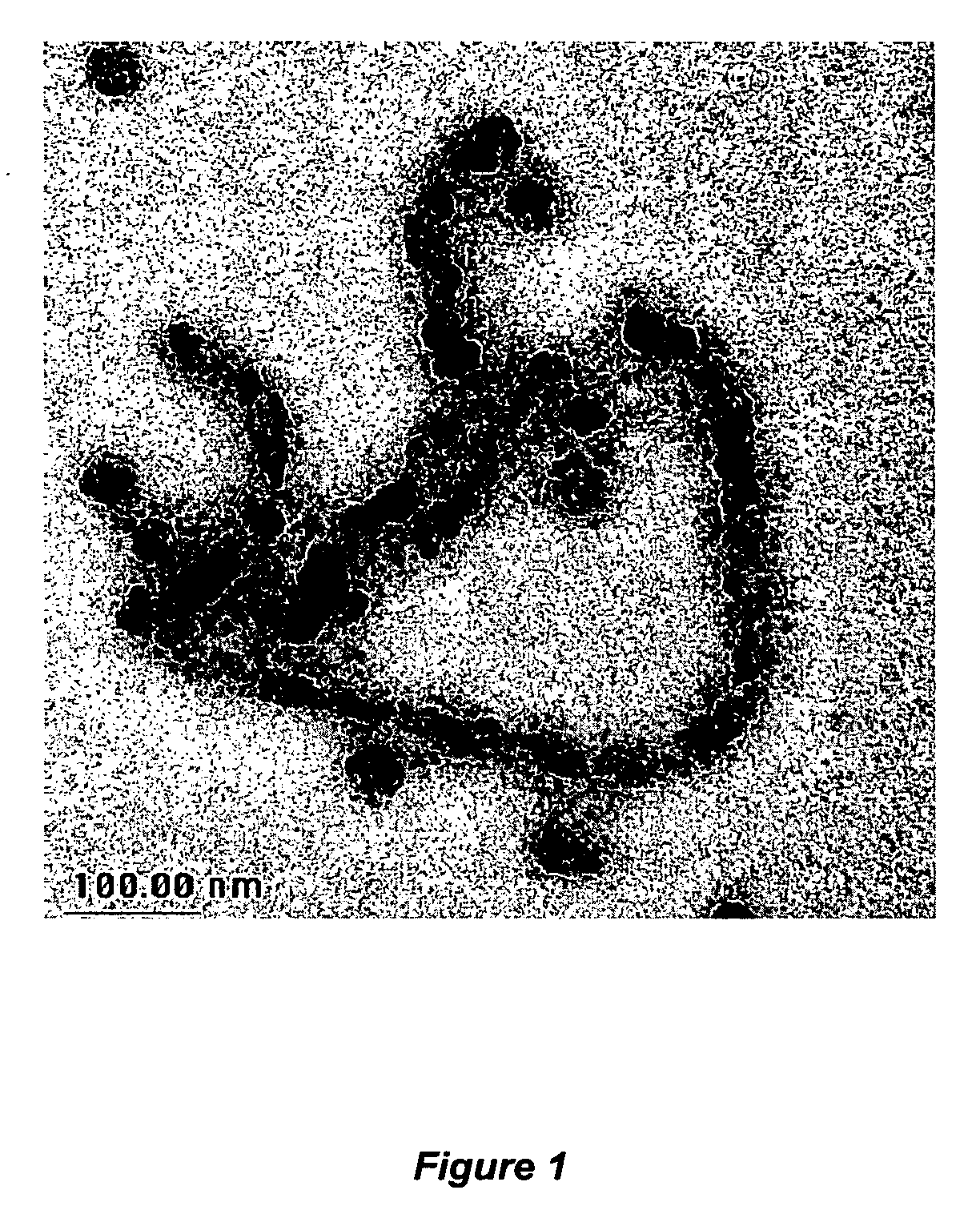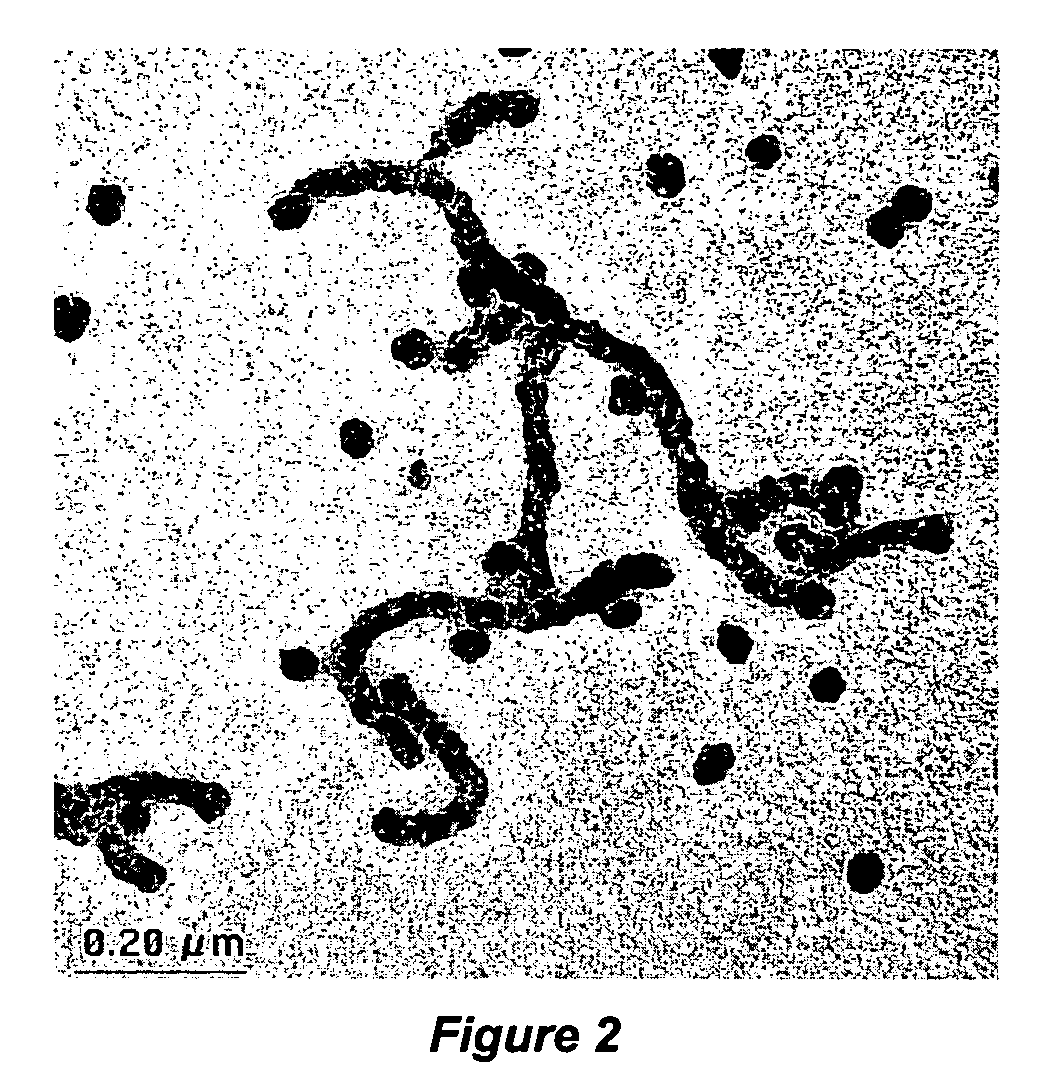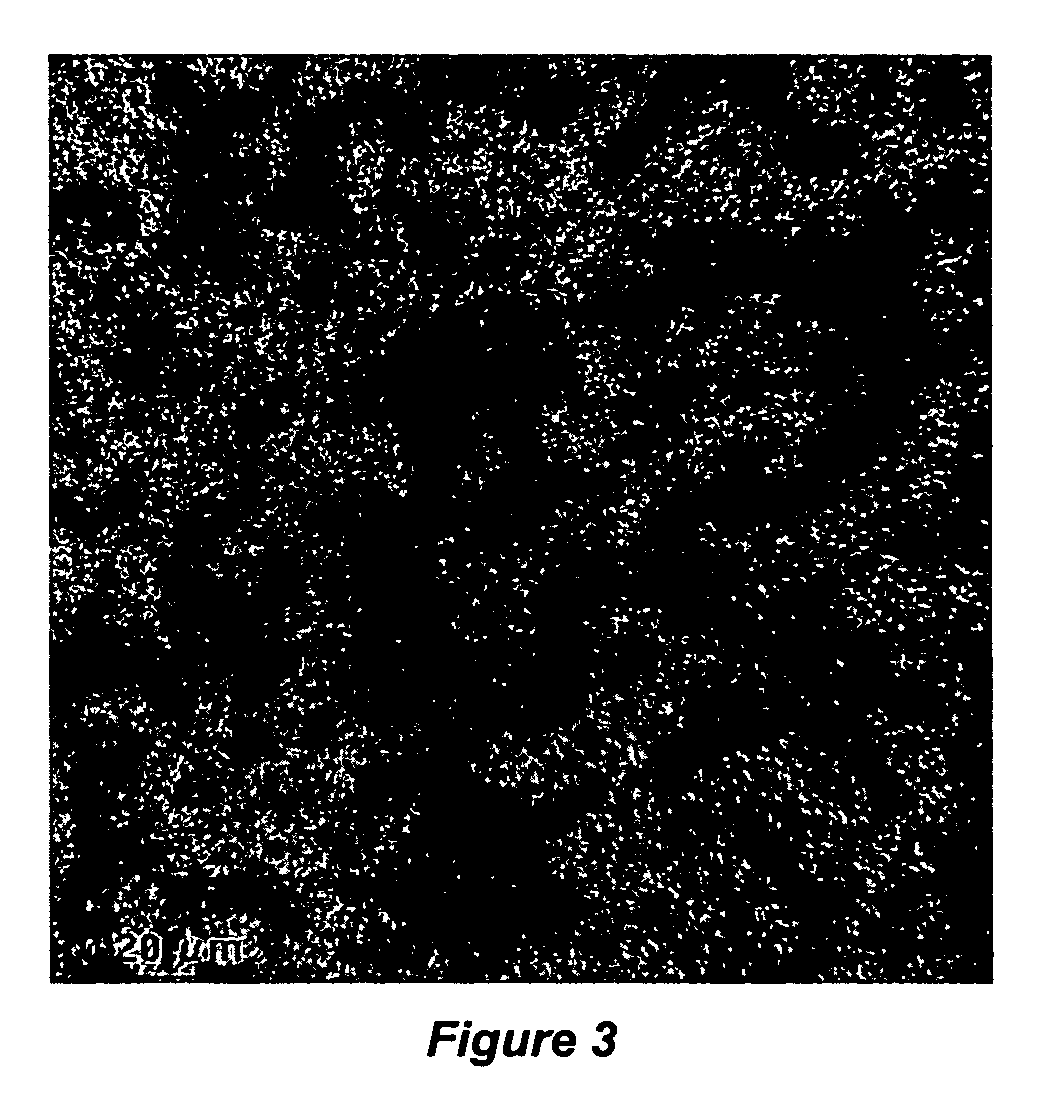Nanoparticles with controlled architecture and method thereof
a technology of nanoparticles and controlled architecture, applied in the field of polymer nanoparticles, can solve the problems of crack formation and crack growth, repetitive, localized high-pressure pounding on tires,
- Summary
- Abstract
- Description
- Claims
- Application Information
AI Technical Summary
Problems solved by technology
Method used
Image
Examples
example 1
[0066] The reactor was charged with 1 lbs. hexane and 0.45 lbs. t-butylstyrene (TbST). The jacket of the reactor was heated to 130° F. When the batch reached 130° F., 3.0 ml of 1.6 M oops / hexane solution and 10 ml of 1.68 M butyl lithium / hexane solution were added. The polymerization exothermed after 5 minutes of reaction. After 1.5 hours, 3.0 lb. styrene / Hexane blend (containing 32.8 wt % styrene) were added to the reactor that was still maintaining at 130° F. An exothermic peak was observed after 10 minutes. After 1.5 hours, a sample was taken for GPC analysis. Then, 100 ml of divinylbenzene was added to the reaction mixture. After another 1.5 hours of reaction, the reaction mixture was cooled down and dropped in an isopropanol / acetone solution (about 500 mL / 2 L) containing BHT. The solid was then filtered through cheesecloth and dried in vacuum.
[0067] GPC analysis of the intermediate product, based on a polystyrene / THF standard, indicated that ST-TBST block copolymer had the mea...
example 2
[0068] The reactor was charged with 2 lbs. hexane and 0.45 lbs. t-butylstyrene (TbST). The jacket of the reactor was heated to 130° F. When the batch reached 130° F., 3.0 ml of 1.6 M oops / hexane solution and 10 ml of 1.68 M butyl lithium / hexane solution were added. The polymerization showed an exothermic peak after 5 minutes of reaction. After 1.5 hours, 3.0 lb. styrene / Hexane blend (containing 32.8 wt % styrene) were added to the reactor that was still maintaining at 130° F. An exothermic peak was observed after 10 minutes. After 1.5 hours, a sample was taken for GPC analysis. Then, 60 ml of divinylbenzene was added to the reaction mixture. After another 1.5 hours of reaction, the reaction mixture was cooled down and dropped in an isopropanol / acetone solution (about 500 mL / 2 L) containing BHT. The solid was then filtered through cheesecloth and dried in vacuum.
[0069] GPC analysis of the intermediate product, based on a polystyrene / THF standard, indicated that the ST-TBST block cop...
example 3
[0070] The reactor was charged with 2 lbs. hexane and 0.45 lbs. t-butylstyrene (TbST). The jacket of the reactor was heated to 125° F. When the batch reached 130° F., 3.0 ml of 1.6 M oops / hexane solution and 7 ml of 1.68 M butyl lithium / hexane solution were added. The polymerization showed an exothermic peak after 5 minutes of reaction. After 1.5 hours, 1.5 lb. styrene / Hexane blend (containing 32.8 wt % styrene) were added to the reactor that was still maintained at 130° F. An exothermic peak was observed after 10 minutes. After 1.5 hours, a sample was taken for GPC analysis. Then, 50 ml of divinylbenzene was added to the reaction mixture. After another 1.5 hours of reaction, the reaction mixture was cooled down and dropped in an isopropanol / acetone solution (about 500 mL / 2 L) containing BHT. The solid was then filtered through cheesecloth and dried in vacuum.
[0071] GPC analysis of the intermediate product, based on a polystyrene / THF standard, indicated that the ST-TBST block copol...
PUM
| Property | Measurement | Unit |
|---|---|---|
| Length | aaaaa | aaaaa |
| Length | aaaaa | aaaaa |
| Length | aaaaa | aaaaa |
Abstract
Description
Claims
Application Information
 Login to View More
Login to View More - R&D
- Intellectual Property
- Life Sciences
- Materials
- Tech Scout
- Unparalleled Data Quality
- Higher Quality Content
- 60% Fewer Hallucinations
Browse by: Latest US Patents, China's latest patents, Technical Efficacy Thesaurus, Application Domain, Technology Topic, Popular Technical Reports.
© 2025 PatSnap. All rights reserved.Legal|Privacy policy|Modern Slavery Act Transparency Statement|Sitemap|About US| Contact US: help@patsnap.com



